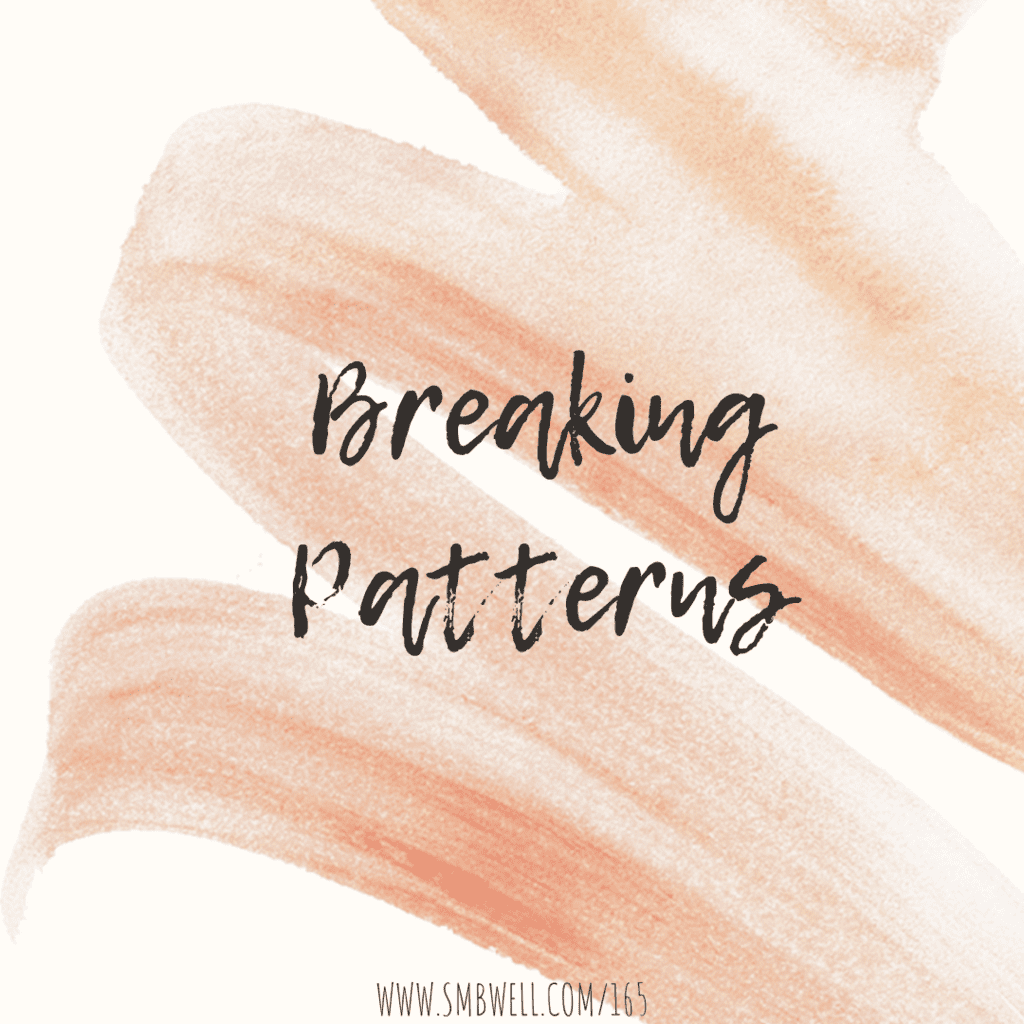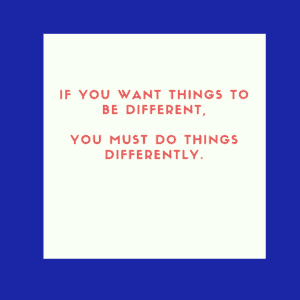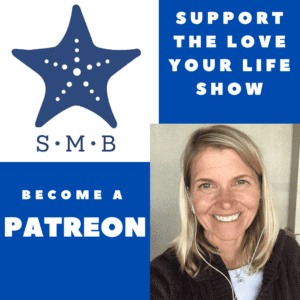Podcast: Play in new window | Download
Subscribe: Apple Podcasts | Spotify | Amazon Music | RSS | More
Breaking patterns
Logically we know: If we want things to be different, we must do things differently. We know how crazy it is to think we’re going to get a different result when we do the same things we did the last 14 times. Furthermore, we know in order to make a new future, not only do we have to stop doing what we’ve done in the past, we also have to stop thinking what we’ve thought in the past.
Which is why we talk a lot on the Love Your Life Show about how to notice the thoughts we’re thinking and how those thoughts are affecting our feeling states, actions, and results we see in our lives. We speak of slowing down the think, feel, act loop of the thought model so we can be more mindful, less reactive, and break old patterns.
What is Going On?
The thing is, sometimes the think to feel transition happens so quickly you don’t even realize you’re thinking something before you’re feeling it. So what then? What happens when you notice it in your body first? Reality makes it feel like your thinking came after the feeling, leaving your brain pondering: “What just happened?!?”
What happened is that the external circumstance triggered a super strong neuropathway, one that’s been conditioned for a while or that was established in a moment of trauma. Because of the brain’s motivational triad, it moves really quickly to keep you alive. Challenge is, we don’t need this super skill as much nowadays that we’re not being routinely chased by tigers! In fact, in this week’s episode of the show I speak of how this happened to me the last time I was getting my hair cut, for goodness sake!
Slowing It Down
This week’s episode delivers the tools to help us slow down, drop into the body, and use our body to send a signal back to the brain that all is okay. The experts from past episodes have told us time and time again, this stress response is not good for our system, our health, or for our aging. Our brains have not evolved to be in a constant state of fight or flight when there’s no reason to be there.
Today, our job is to start to notice them so we can start to break the patterns we have.
Breaking Patterns
We have many many many experiences in our life. Some are quite banal like the one I explain in the episode. Others are more significant. When the stress response is triggered, the feeling state in our body feels (and the harm it does to our health) is the same. What we tend to do as humans is push it down and try to ignore it. This NEVER works. Ever.Action
The beauty of the brain is that, bit by bit, we can re-program and heal. If we don’t ignore the small or large stress response triggers, we begin to heal and help to eliminate future triggers in our lives.
Listen in to the episode as I recorded it to take the fear away from feeling these strong emotions by giving you simple action steps to take. Once you start to be aware of your body and its’ reactions, you’ll notice this is happening quite frequently which gives you many opportunities to practice.
RAIN
Start bursting past bubbles of little t or big T trauma by using this 4 step process today. This is a simple process that coaches and therapists have been labeling for years. Terri Cole speaks of Recognize, Release, Respond while Alison Canavan speaks of Stop, Catch, Change. The labeling doesn’t matter. What does matter is that whichever practice you choose, you do it with kindness and compassion towards yourself.
- Recognize: Recognize the feeling.
- Aware: Be aware of what’s happening. Notice. Be mindful.
- Investigate: Why might this be? What is it triggering for me? Am I currently in danger now? Nope. Have compassion for the feeling state and for you. I like to talk to myself as I would’ve liked an adult to speak to me when I was a child or as I’d like someone to talk to a younger version of me, because that’s what we’re doing,. Healing a part of our inner child, reparenting ourself.
- Nurture: Choose a compassionate act. In my opinion, this is the most important step as this is where we create new neuropathways. This is where we practice breaking patterns of fight or flight. The list below includes some good places to start. If you have ways you use, I’d love to expand my list. Please let me know in the comments or on a post this week on Instagram.
Tools and Techniques Mentioned:
- 3 part breath: Breathe in, Pause, Breathe out.
- Flutter lip breathing
- Double inhale, long exhale
- 3 Breaths Exercise (link is to quick video explanation)
- Full body squeeze
- Hand on heart with exhale
- Yawn
- Tapping
- Essential oils
- Past Love Your Life Show Episode with Author Stephanie D’Alfonzo
Get started
Time for Action! Breaking Patterns! Choose one and practice it today,. I 100% pinky promise you that your nervous system will go into this stress response system today. We are humans. We’ve had experiences. The question is: will you break patterns or repeat and reinforce them?
Let me know in the show notes which one you’ll practice today and this week. Or head to the free Warrior Women facebook group and tell me your favorite way to calm your body down. I’m here for you warrior!
Ready for Community?
If you’re over 40, learn more about becoming a Midlife Warrior. This is one of the funnest places to hang out online, full of supportive women doing the work by your side. I’d love to see you in there this month!





 BECOME A PATREON AND SUPPORT SUSIE HERE
BECOME A PATREON AND SUPPORT SUSIE HERE


